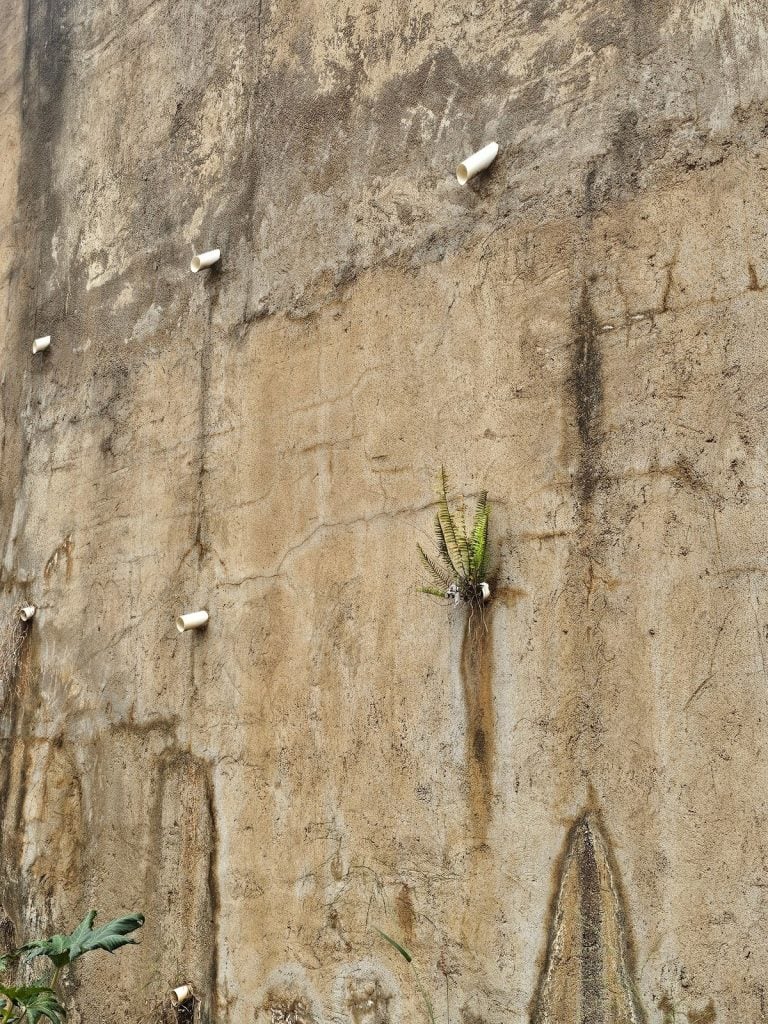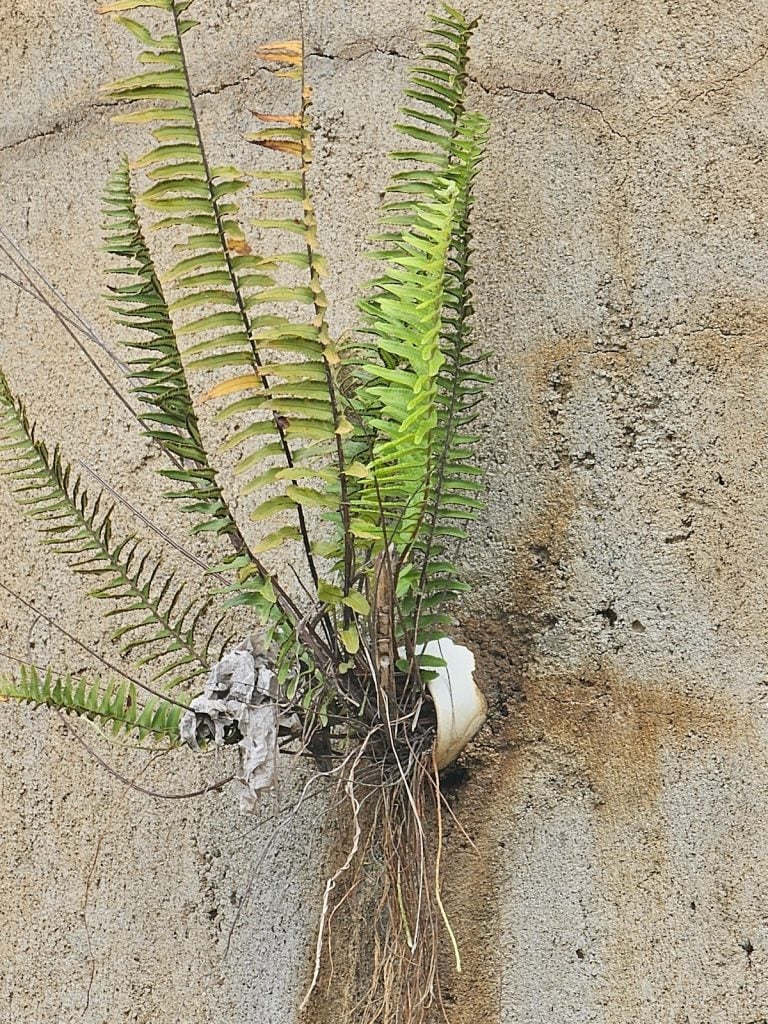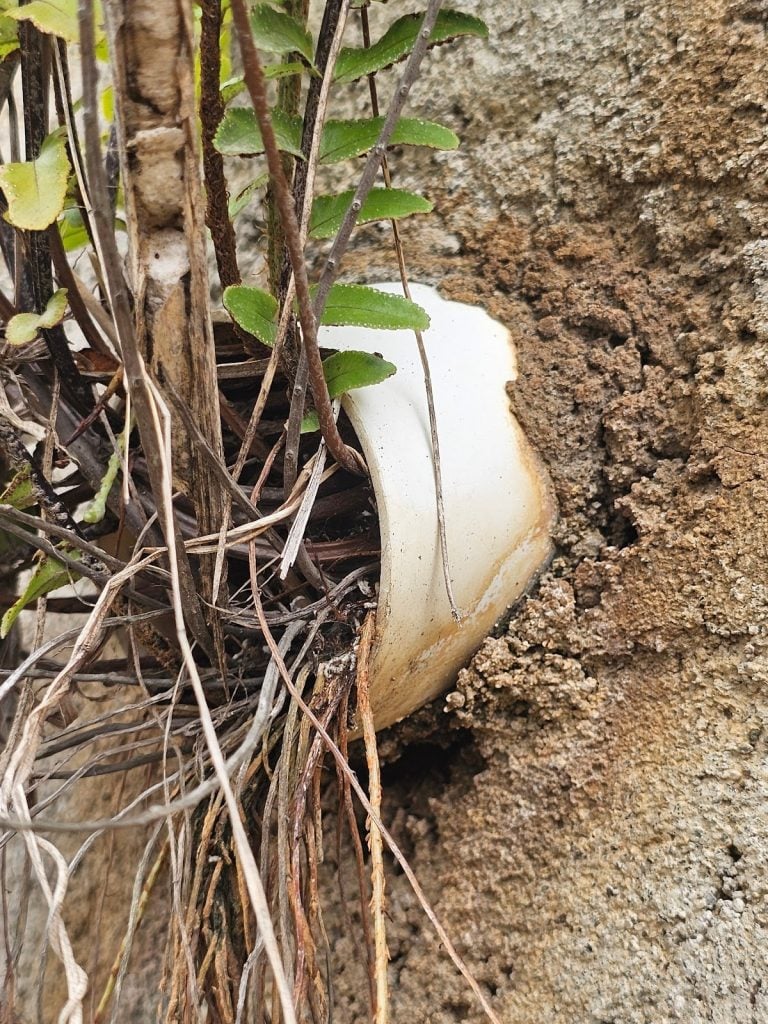Prevent Clogged Wall Weeps Retaining Walls
This past week we looked at a retaining wall at a space between a yard and a driveway. These types of retaining walls are really common here in Washington DC. Not all of us happen to have driveways that lead from the street to our own designated parking space at the front of the house, but the retaining wall configuration is not that different. Even with a parking space or a typical row home yard, retaining walls are relatively low, in both of these particular examples. In some cases those typical front yard retaining walls are made of granite stone and or historic brick and two to three feet tall above the adjacent ground.
That means that the dirt that they’re retaining or holding back reaches a weight of what would be typical with a few feet of retaining dirt. When over-hydrated, without proper weeps, that amount of retained earth or soil can still be significant. Today we’re looking at a massive retaining wall. You can see an example of this wall in the picture below. Massive retaining walls like this are often used to divide and flatten or terrace large hills. In urban spaces, all of this land is highly valuable and useful.
When a large hill is left in places it’s much less useful. A large hill, for example, is difficult for building construction and extremely difficult for parking and or driveways. Even if a lawn is grown on top of a large hill, it can be difficult to cut. There’s a few examples, in Washington DC, where large hills in front yards or even backyards can make it difficult to use the space functionally.

Just like the short retaining walls, the larger retaining walls also need to have hydrostatic pressure relief systems. In fact it’s easy to argue that it’s even more important than in a very large wall. Generally when large walls are built like this, they have a system for lateral deflection resistance. In this particular case this is a cast in place concrete wall. This wall has a steel reinforcement bar grid built into the cast in place concrete. That grid can help to resist lateral deflection.
Even more so though in tall retaining walls a tie back system may be used. Tie backs can be laid into the earth and then set with a perpendicular attached member embedded in the adjacent earth to provide resistance from lateral deflection. Essentially, the tie back or the deadman, as it is often called, can use the weight of the retained earth to support itself. Essentially a tie back like this is integrating the resistance into the hill or retained earth itself.
Last week, we looked at weeps that were filled with both dirt in some cases, and gravel in other cases. To have the weeps filled with dirt is definitely problematic. But even though gravel isn’t ideal, it’s still better than the weeps being filled with dirt because dirt clogs more than gravel. Ideally, a filter fabric should be installed around the weeps and or around a horizontal hydrostatic pressure relief collection pipe.
The filter fabric essentially allows water to flow into the perforated pipe without the perforation holes and where the pipe itself becoming clogged with dirt or gravel. Here, as you can see in the picture below, there’s so much dirt present in the weeps that it’s literally allowing plants to take root and grow into that dirt. Where the pipe openings are exposed at the vertical face of the wall, the plants are positioned well to photosynthesize and prosper. They are growing very well, too well.

The picture below shows a closer view where you can see the dense vegetation.

In a future blog, as well, we’ll take a look at this wall and discuss some of the other details of the structural elements of the construction.
We can Help
Our company focuses on historic restoration more than modern building upkeep, maintenance, and construction, but our company understands both types of construction very well and a full picture well-rounded approach is needed in any niche in the construction industry. Although we focus on historic restoration, repointing, tuckpointing and historic brick repair, our company also has technical knowledge and competencies in the areas of modern and contemporary construction as well as we become one of the leaders in that area of the market today. Understanding both historic and modern or contemporary construction is useful because both aspects help understand the challenges and potential solutions for challenges in building science and construction.
We can help with a variety of historic masonry restoration needs and upkeep, from modest tuckpointing and or repointing to complicated and extensive historic masonry restoration. Infinity Design Solutions is a historic restoration specialist contractor specializing in both historic masonry restoration such as tuckpointing our repointing, and brick repair. If you have questions about the architectural details or facade of your historic building in Washington DC, reach out and say hello and if we can help we’ll be glad to assist you. You can email us or call us on the telephone at the following link: contact us here.
